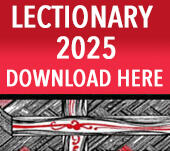In this paper I focus on the theology of sexuality in the Creation accounts in Genesis. I have chosen to explore these accounts with the feminist biblical theologian, Phyllis Trible, and her book, God and the Rhetoric of Sexuality.[1] When this particular book came out in the 70s, it was ground-breaking in the way it re-examined the traditional readings of key texts and brought a fresh new interpretation that Trible shows convincingly to come out of a close reading of the text. As well as being convincing, obviously this reading is also more faithful to Scripture than simply throwing out certain texts as irredeemably damaging to women. Phyllis Trible retrieves the female in the text and identifies this as vital for a biblical theology of sexuality. I argue that the theological importance of this goes even further.
Analysis
To begin then with the first creation account:
Needless to say, the key text here is v27:
And God created humankind in his image,
In the image of God created he him;
Male and female created he them. (1:27 RSV)
Trible identifies Genesis 1 as a liturgy of creation.[2] It is poetic in form and, as such, it it has a sophisticated structure full of parallelisms – more about that later. The immediate pre-context to v27, in verses 24-26, is the creation of land animals to fill the earth and share its vegetation, followed by God’s deliberation to create humanity ‘in our image, after our likeness’. The immediate post-context to v27 is blessing.
And God blessed them, and God said to them:
‘Be fruitful and multiply,
And fill the earth;
Subdue it and have dominion over the fish of the sea,
Over the birds of the heavens,
And over every living thing that moves upon the earth.’ (1:28 RSV)
Trible notes that while the blessing of dominion is unique to humanity as male and female, the blessing of procreation is shared with other living creatures in v22.[3]
To return to verse 27:
And God created humankind in his image,’
In the image of God created he him;
Male and female created he them.
Perhaps the most striking thing about this verse is the repetition of certain words. It is only three lines long, but ‘God’ appears twice, ‘created’ three times, and ‘image’ twice. But for all its apparent redundancy, the verse has a sophisticated structure with two important parallelisms:
The first parallelism:
In the image of God created he him;
Male and female created he them.
There is a correspondence in meaning between ‘image of God’ and ‘male and female’ – that is, between the lesser known and better known elements in the parallel. The better known sheds light on the lesser known. This parallelism indicates that maleness and femaleness is intrinsic to humankind’s being created in the image of a God who, while neither male more female, is nevertheless described throughout the OT in both male and female imagery as Trible goes on to show.[4]
The second parallelism is between ‘humankind’ (Hebrew hā-'ādām) and ‘male and female’ (zākār ûn eqēbâ) and their corresponding pronouns, ‘him’ ('ōtô) and ‘them ('otām).
And God created humankind in his image,’
In the image of God created he him;
Male and female created he them.
As Trible points out, ‘all five words are objects of the verb create, with God as its subject’.[5] The shift from singular to plural pronouns shows clearly that hā-'ādām is not one single creature but rather two creatures, one male and one female. Hā-'ādām functions as a generic collective noun that should be translated as humankind or similar. This interpretation is reinforced by the immediately previous verse 26. There is a plural verb form in ‘let them have dominion’ which refers back to the singular word 'ādām:
And God said,
‘Let us make humankind ['ādām] in our image,
After our likeness;
And let them ['otām] have dominion ...’(1:26. RSV).
These shifts from singular to plural rule out an androgynous interpretation of hā-'ādām. ‘From the beginning, humankind exists as two creatures, not as one creature with double sex.’ Nor is there a male ‘him’ before there is both male and female as some traditional readings have assumed because the Hebrew masculine grammatical gender does not indicate sex. Instead, there is original unity that is at the same time original differentiation.[6] From the beginning, the word humankind is synonymous with the phrase ‘male and female,’ though the components of this phrase are not synonymous with each other. Unity embraces sexual differentiation; it does not impose sexual identicalness. This interpretation is established by the parallelism between ‘humankind’ and ‘male and female’. A later reference at the beginning of Genesis chapter 5 subsequently confirms this:
When God created humankind ['ādām],
In the likeness of God made he him;
Male and female created he them
And blessed them and called their name humankind ['ādām],
When they were created. [5:1b-2, RSV][7]
______________________________________
In the narrative of the second creation account, Trible translates verses 7 and 8 thus:
Then Yahweh God formed the ‘earth creature’ [hā-'ādām]
From the dust of the earth
And breathed into its nostrils the breath of life:
And the earth-creature became a nephesh [a living being]. [2:7-8]
Sexuality cannot be assumed here because it is created later, which is why Trible uses the neuter pronoun ‘it’ to refer to this ‘earth-creature’. At this point hā-'ādām is not male, not the first man, because so far it is sexually undifferentiated.[8]
The creation of the sexual differentiation which is to follow in verses 21-24 is signalled by another divine decision in verse 18 (again, this is Trible’s translation):
It is not good for the earth creature to be alone.
I will make a companion corresponding to it.
Trible considers that the word 'ēzer (companion) has been traditionally mistranslated as ‘helper’. A helper is a subordinate[9] whereas a companion is alongside on an equal footing. The phrase ‘corresponding to it’ connotes identity, mutuality, and equality. The 'ēzer is the one who ‘alleviates isolation through identity’.[10]
Trible goes on to note that ‘[t]his divine act [the creation of sexuality] will alter radically the nature of the earth-creature (hā-'ādām) and bring about new creatures so that male and female together become the one flesh that is wholeness rather than isolation.’[11] In its becoming material for creation, ‘[t]he making of the sexes is intrinsic to the earth-creature. From one come two ... Continuity exists in the one-ness of humanity, but here stress falls upon the discontinuity that results from sexual differentiation.’[12] So when hā-'ādām next speaks, in v23, a different creature is speaking – a man. For the first time, this newly differentiated hā-'ādām speaks (and again the translation is Trible’s):
And hā-'ādām said,
This, finally, bone of my bones
And flesh of my flesh.
This shall be called woman ['iššâ]
Because from man ['iš] was taken this.
Trible dispenses swiftly with the traditional (and patriarchal) reading of this text which subordinates the woman through seeing her as derivative from (and moreover named, and thus defined by) the man.[13] ‘The use of the female pronoun ‘this’ (zō’t] unmistakeably emphasizes the woman whose creation has made the earth creature different. It is through woman that man becomes man. At the same time, the earth-creature that was ‘it’ gives himself new identity in a word that is new to the story – 'iš [man]. Only after surgery does this creature, for the very first time, identify himself as male.’[14] The basic word for humanity before sexual differentiation, hā-'ādām [earth-creature] now becomes a sexual reference and from here on it is used frequently, though not exclusively, for the male (an ambiguity still lurks here). However, as Trible points out,
... no ambiguity clouds the words 'iššâ and 'iš: one is female, the other male. Their creation is simultaneous, not sequential. One does not precede the other, even though the time line of this story introduces the woman first (2:22). Moreover, one is not the opposite of the other. In the very act of distinguishing female from male, the earth creature describes her as ‘bone of my bones and flesh of my flesh’ (2:23). These words speak unity, solidarity, mutuality, and equality. Accordingly, in this poem the man does not depict himself as either prior to or superior to the woman. His sexual identity depends upon her even as hers depends upon him. For both of them sexuality originates in the one flesh of humanity.
To fulfil his identity as male, which depends on the complement of femaleness, the man abandons familial identity for the one flesh of sexuality. In the words of v24:
‘Therefore a man leaves his father and his mother and cleaves to his woman’ (RSV). [2.24] [15]
Trible sums up the creation of sexuality in this account thus:
‘From one comes two
From wholeness comes differentiation
Then differentiation returns to wholeness
From two come the one flesh of communion between female and male.’[16]
Discussion
Both the creation accounts identify sexuality as integral and unique to the creation of humanity. The logic of sexuality is the unity-in-differentiation of male and female. It is plain that sexuality is not seen as an essence or property that an individual possesses. Nor can an individual human being function properly in isolation.[17] Personal wholeness through unity-in-differentiation does not require procreation to be what it is; therefore procreation is identified as a blessing following from sexuality and not as inherent to sexuality.
Sexuality as unity in differentiation is primordial (that is, it is there from the beginning), but the structure of both accounts make it clear that that it is the unity of humankind that is basic and thus logically prior to sexuality as differentiated unity. If it were not for this basic unity, there would be only differentiation and therefore no common humanity. Male and female would be two different creatures (on two different planets, Mars and Venus). The key theological insight about sexuality in these accounts is that the human imaging of God is expressed via male/female unity in differentiation.
The nature of this differentiated unity is further explained by the meaning of the phrase, ‘a companion corresponding to it’ in the second account. This phrase indicates the qualities of companionship that define the nature of the male-female relationship: that is, identity (as in the conferring of identity), mutuality, solidarity, and equality. While these are also qualities of other human relationships, here they are advanced as the primary purpose of sexuality – corresponding companionship. This primary purpose makes it very difficult to maintain the traditional (patriarchal) reading of female subordination for subordination is incompatible with the companionship of equals. To insist on subordination means to restrict these qualities of side-by-side companionship to relationships of undifferentiated unity – for example, male-to-male or female-to-female relationships which, as pairings of sexual identicals, are mimetic in nature, therefore undifferentiated. This would require either the creation of human relationality prior to the creation of sexuality or a re-definition of sexuality to include undifferentiated unity, neither of which is supported by the text. 'Iššâ, while sharing some of what is 'iš, is not a clone of 'iš but is fashioned into a different creature. Male identity is defined in relation to female identity and requires the complement of female identity to be whole. The fundamental (though not exclusive) form of human wholeness is in the ‘I-thou’ male/female relation.
There is a question begged by all of this. Standing back from the creation accounts as literary units: why was it important for the authors of these accounts to highlight the creation of sexuality the way they do? What might have prompted them to produce these accounts of the creation of sexuality? According to OT scholar Gerard Von Rad, verse 27 of chapter 1 appears to be a subtle but strong polemic against the ‘divinisation of sex’ which was endemic in the thought of Israel’s pagan neighbours. Throughout the mythology of the ancient Near East, the sexual activities of the gods form a dominant motif. In the fertility cults of Palestine and Mesopotamia, creation was often understood as emanating from the union of male and female deities. To quote Von Rad, ‘Copulation and procreation were mythically regarded as a divine event. Consequently the religious atmosphere was as good as saturated with mythical sexual conceptions’. This is why, he suggests, in v27 sexual differentiation is presented, and emphasised, as a creation by God, and not as part of the divine order itself. [18]
What happens when the creation of sexuality is looked at through this hermeneutical lens of polemic against idolatry? Sexuality is there at the beginning as integral to the creation of humankind, but there is an additional layer of meaning. Sexuality is not divine, as with the pagan gods, so it cannot be an act of worship as sympathetic magic (as with Baal worship) – and by extension cannot itself be worshiped, because although it is humanly primordial, it cannot be primary. God alone – the God who is the creator of sexuality, is primary. There can be no gods before this God.
However, a reading back from a motivating situation needs to become a reading forward as well. OT scholar Gordon Wenham comments that Genesis ‘contains essential background for understanding those events which constituted the nation of Israel as the Lord’s covenant people’ and its first two chapters must be seen from this perspective. [19] The understanding of the nature of God, and of the God-human relationship that undergirds the covenants which define Israel’s identity as People of God, is stated in Genesis 1v27. This verse not only ‘affirms the unity of God over against the polytheisms current everywhere in the ancient Near East ... [but also] gives [humankind] a very different place in the created order from that given [them] by oriental mythology’.[20] It follows from this that the prescriptions and proscriptions of the Mosaic Law are understood to reflect the way God has created humankind – which, moreover, can be understood as having a fundamental connection to the way God is in God-self.
Concluding comments
This last statement points to a theo-logic in the creation of sexuality that goes beyond polemic. The doctrine of sexuality in the first creation account could be termed a high doctrine of sexuality. The correspondence between ‘image of God’ and ‘male and female’ points to a God who, while neither male nor female (although portrayed throughout the OT in imagery relating to both), is nevertheless imaged as maleness and femaleness in relation.[21] This interplay of differentiated unity is thus described by Trible:
From wholeness comes differentiation
Then differentiation returns to wholeness.[22]
It is only much later that the germ of a doctrine of God as differentiated unity develops into the Trinity. The author of the verse, needing to establish primal truth and speak against idolatry, is inspired to speak more than he knows. The Transcendent is revealed in a correspondence that glimpses beyond the limits of human vision a divine vision. Christian theology has interpreted the image of God Christologically, [23] but it is more than that. For while it has been argued that without the NT readings of Genesis 1:27 which see Christ as the image (eikon) of God,[24] Trinitarian doctrine would have no biblical foundation, a purely Christological, especially Pauline, interpretation of this verse is in danger of losing what the parallelism of the verse delivers so precisely – the logic of differentiated unity.
Therefore the logic of sexuality as differentiated unity is, I submit, much more than polemic, more even than a tradition of reading that runs through the Bible, but is a logic which transcends these and is seminal to the Trinitarian doctrine which is fundamental to the Christian understanding of God and, as such, forms the basis of the creeds which are basic to our ecclesial identity.
[1] Phyllis Trible, God and the Rhetoric of Sexuality (Philadelphia: Fortress, 1978).
[2] Ibid. 12. ‘And God blessed them, saying, “Be fruitful and multiply and fill the waters in the seas, and let birds multiply on the earth.”’ [1:20-22 RSV]
[3] Ibid. 15.
[4] Ibid. 21.
[5] Ibid. 17.
[6] The singular hā-'ādām and 'ōtô (his) indicate unity rather than opposition: Ha-'adam is not an original unity that is subsequently split apart by sexual division [ibid. 18].
[7] Ibid.
[8] Ibid. 79-80.
[9] Although the word 'ēzer elsewhere in the OT usually refers to a divine super-ordinate Helper (Gordon J. Wenham, Genesis 1-15, WBC (Waco: Word Books, 1987), 68.
[10] Ibid. 90.
[11] Ibid. 94. Moreover, in the taking of the rib and forming it into the woman, ‘the creative act comes out of the earth creature itself.’ This makes woman unique in creation – the only creature to be formed from another living creature. [96].
[12] Ibid. 97.
[13] Ibid. 98-9. In the Hebrew literary tradition the act of naming confers power over the person or thing named – see, for example, Gen 4:17, 25, 26a – however Trible demonstrates that the statement ‘This shall be called woman’ is not a naming as such, but a recognition of sexuality. 'The verb call [qr] by itself does not mean naming; only when joined to the noun name [šēm][as in v20 in which hā-'ādām names the animals] does it become part of a naming formula’. Here ‘the noun name is strikingly absent from the poetry. Hence, in calling the woman, the man is not establishing power over her, but rejoicing in their mutuality. The word woman ('iššâ) ... itself is not a name; it is a common noun, not a proper noun. It designates gender; it does not specify person. Moreover, this word appears in the story before the earth creature ‘calls’ it [see v22]' (ibid. 99-100).
[14] Ibid. 98.
[15] Wenham, Genesis 1-15, 69,71. Wenham comments that in this story’s ‘often poetic phraseology are expressed some of the Old Testament’s fundamental convictions about the nature and purpose of marriage’ (69). The use of the terms ‘leaves’ and cleaves’ ‘in the context of Israel’s covenant with the Lord suggests that the Old Testament viewed marriage as a kind of covenant’ (71).
[16] Trible, God and the Rhetoric of Sexuality, 104.
[17] This challenges the prevalent late-modern view of the person as an autonomous self-defining individual who happens to possess a sexuality.
[18]Gerhard von Rad, Old Testament Theology (New York, 1962), 1:27. See also Raymond Collins, "The Bible and Sexuality," BTB 7 (1977), and Richard M. Davidson, ‘The Theology Of Sexuality in the Beginning: Genesis 1-2’, Andrews University Seminary Studies 26.1, Spring 1988, 5-21: 6.
[19] Wenham, Genesis 1-15, xxii. ‘Genesis is not merely an extrinsic prologue to the other books of the Pentateuch; many of its stories from chap. 1 onwards look forward to the institutions of the Mosaic era.’ (xliv)
[20] Ibid. xlix.
[21] The ‘I-Thou’ relationship of male and female is the essence of the imago Dei, as Karl Barth maintains throughout his Church Dogmatics. See especially vols. 3/1, 3/2, and 3/3. Another feminist theologian, Janet Martin Soskice, writes that ‘[t]he as yet unsung glory of Genesis 1.26-27 is that the fullness of divine life and creativity is reflected by a humankind which is male and female, which encompasses if not an ontological then a primal difference. Janet Martin Soskice, 'Imago Dei and Sexual Difference: Toward an Eschatological Anthropology', in Malcolm A. Jeeves (ed.), Rethinking Human Nature: A Multidisciplinary Approach (Grand Rapids: Eerdmans, 2010), 116-126:125.
[22] Trible, God and the Rhetoric of Sexuality, 104.
[23] Of course, a Christian doctrine of God sees the imago Dei as being fulfilled in Christ, in whom, as Paul observes, there is neither male nor female, but whose incarnation, resurrection and ascension fulfils an imago Dei which is the differentiated unity of both male and female. As Grenz puts it, we have to read this verse Christologically as well as anthropologically ‘for we cannot know what it means to be human without looking to Jesus, who as the imago Dei embodying the divine purpose for humankind is the true human’. Stanley J. Grenz, 'Jesus as the Imago Dei,' Journal of Evangelical Theological Studies, 617ff: 627.
[24] Ibid. 619. ‘The idea of Christ as the imago Dei that is implicit throughout much of the NT is explicitly set forth in several texts ... Two texts, both in the Pauline writings, are especially important in this regard—2 Corinthians 4:4 and Colossians 1:15.’

















Comments
Log in or create a user account to comment.